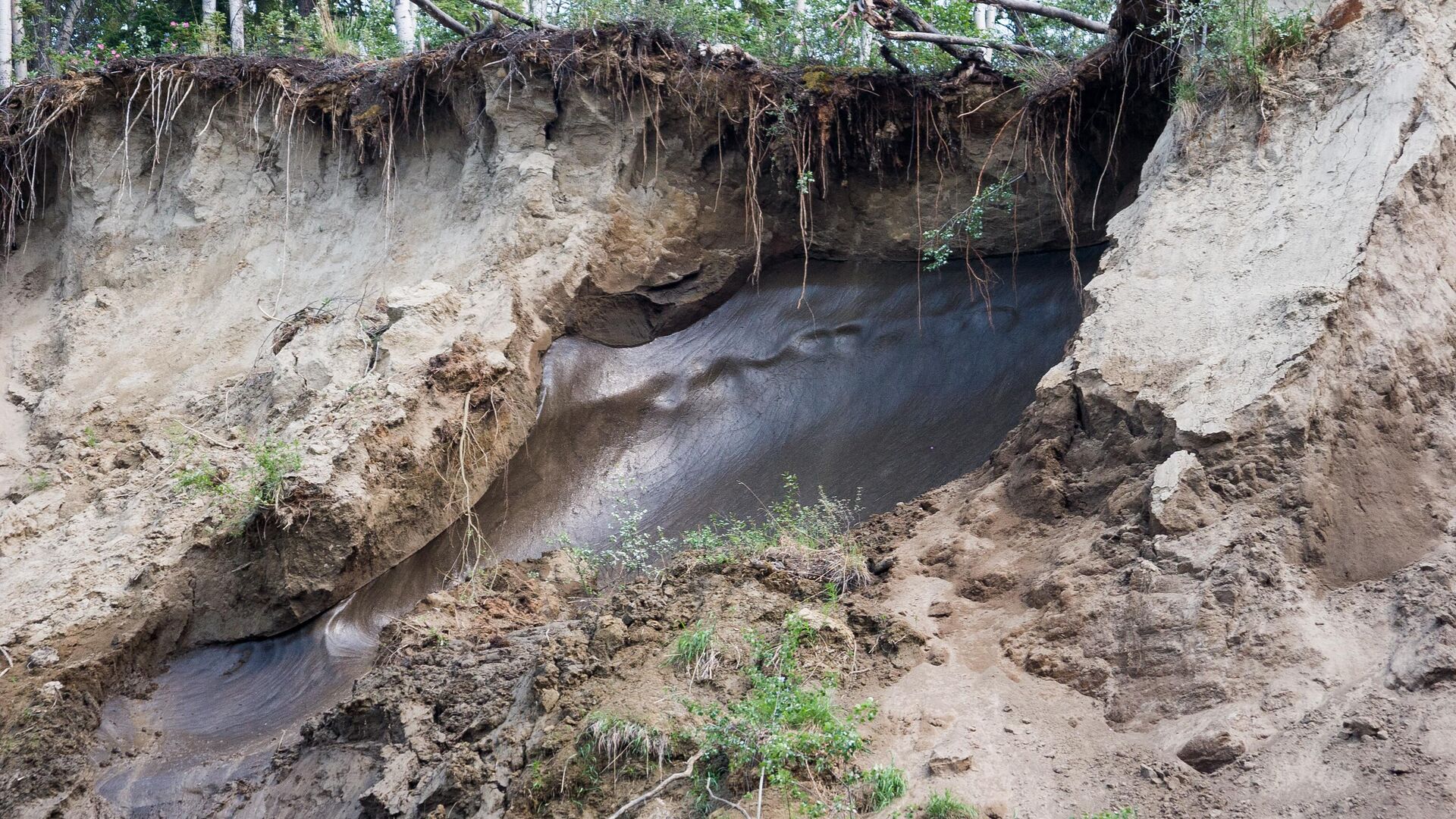https://sputnikglobe.com/20230311/revived-ancient-zombie-virus-from-siberian-permafrost-hasnt-lost-its-touch-study-warns-1108276690.html
Revived Ancient Zombie-Virus From Siberian Permafrost Hasn't Lost Its Touch, Study Warns
Revived Ancient Zombie-Virus From Siberian Permafrost Hasn't Lost Its Touch, Study Warns
Sputnik International
A team of scientists led by Professor Jean-Michel Claverie of the French Aix-Marseille University has revived ancient nearly 50,000-years-old viruses found in the permafrost. The researchers concede that they could prove dangerous for animals and humans.
2023-03-11T00:06+0000
2023-03-11T00:06+0000
2023-03-11T02:09+0000
science & tech
siberia
permafrost
viruses
pathogens
https://cdn1.img.sputnikglobe.com/img/07e7/03/0a/1108276520_0:160:3073:1888_1920x0_80_0_0_c89654791a475abef9cb7943eec8b23e.jpg
A team of scientists led by Professor Jean-Michel Claverie of the French Aix-Marseille University has determined that a revived ancient viruses found in the permafrost could still prove dangerous for both animals and humans.A number of archaic viruses were identified in permafrost samples taken from seven different regions of Siberia. The oldest one was dated 48,500 years. It was found in a sample of soil extracted from an underground lake at a depth of 16 meters. The youngest viruses, estimated to date back about 27,000 years, were found in the carcass of a woolly mammoth.Scientists have identified five new families of archaeal viruses, in addition to the two already known. Describing the pathogens as "zombie viruses," researchers have warned of the possible threat to public health.In recent years, scientists have increasingly spoken of the threat posed by ancient viruses and bacteria stored in permafrost for tens of thousands of years. However, now that the permafrost is melting, pathogens are likely to be released into the atmosphere with unknown consequences.The study, "An Update on Eukaryotic Viruses Revived from Ancient Permafrost," was published in the February issue of Viruses.
siberia
Sputnik International
feedback@sputniknews.com
+74956456601
MIA „Rosiya Segodnya“
2023
News
en_EN
Sputnik International
feedback@sputniknews.com
+74956456601
MIA „Rosiya Segodnya“
Sputnik International
feedback@sputniknews.com
+74956456601
MIA „Rosiya Segodnya“
zombie-virus from siberian permafrost, professor jean-michel claverie, 50000 old virus, why do scientists revive viruses, are archaeal viruses danger to hu,ans, an update on eukaryotic viruses revived from ancient permafrost, new families of archaeal viruses, revived ancient zombie-virus
zombie-virus from siberian permafrost, professor jean-michel claverie, 50000 old virus, why do scientists revive viruses, are archaeal viruses danger to hu,ans, an update on eukaryotic viruses revived from ancient permafrost, new families of archaeal viruses, revived ancient zombie-virus
Revived Ancient Zombie-Virus From Siberian Permafrost Hasn't Lost Its Touch, Study Warns
00:06 GMT 11.03.2023 (Updated: 02:09 GMT 11.03.2023) Permafrost covers one-fifth of the Northern Hemisphere, including parts of Alaska, Canada and Russia. The combination of cold, lack of oxygen, and light allows the remains of living organisms to persist well in the permafrost. Viruses may also be among these organisms.
A team of scientists led by Professor Jean-Michel Claverie of the French Aix-Marseille University has determined that a revived ancient viruses found in the permafrost could still prove dangerous for both animals and humans.
A number of archaic viruses were identified in permafrost samples taken from seven different regions of Siberia. The oldest one was dated 48,500 years. It was found in a sample of soil extracted from an underground lake at a depth of 16 meters.
The youngest viruses, estimated to date back about 27,000 years, were found in the carcass of a woolly mammoth.
Scientists have identified five new families of archaeal viruses, in addition to the two already known. Describing the pathogens as "zombie viruses," researchers have warned of the possible threat to public health.
"We view these amoeba-infecting viruses as surrogates for all other possible viruses that might be in the permafrost," Claverie told US media. "We see the traces of many, many, many other viruses. So we know they are there. We don’t know for sure that they are still alive. But our reasoning is that if the amoeba viruses are still alive, there is no reason why the other viruses will not be still alive, and capable of infecting their own hosts."
In recent years, scientists have increasingly spoken of the threat posed by ancient viruses and bacteria stored in permafrost for tens of thousands of years. However, now that the permafrost is melting, pathogens are likely to be released into the atmosphere with unknown consequences.
"The risk is bound to increase in the context of global warming," Claverie said, "in which permafrost thawing will keep accelerating, and more people will populate the Arctic in the wake of industrial ventures."
The study, "
An Update on Eukaryotic Viruses Revived from Ancient Permafrost," was published in the February issue of
Viruses.



